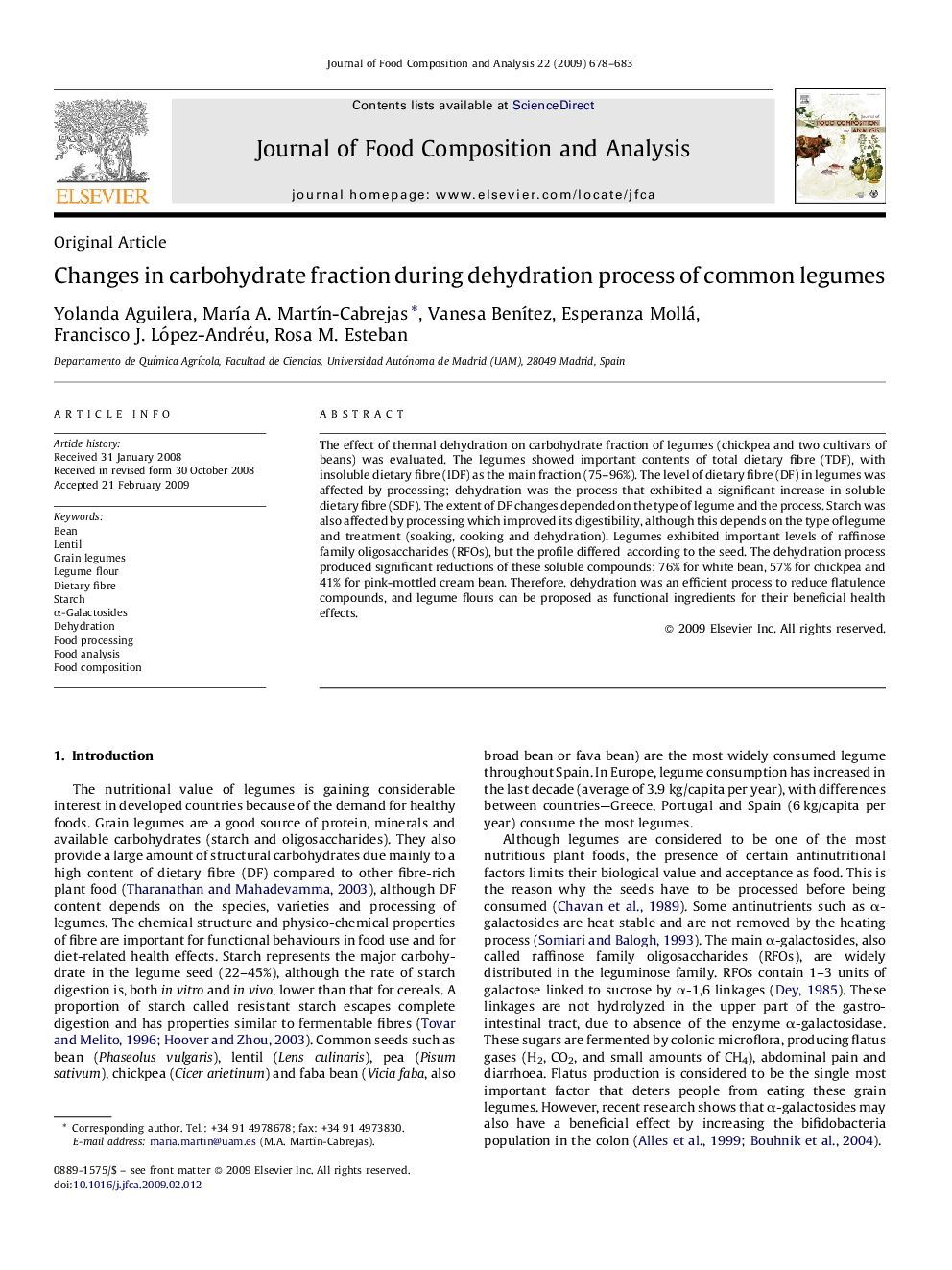| Article ID | Journal | Published Year | Pages | File Type |
|---|---|---|---|---|
| 1218856 | Journal of Food Composition and Analysis | 2009 | 6 Pages |
The effect of thermal dehydration on carbohydrate fraction of legumes (chickpea and two cultivars of beans) was evaluated. The legumes showed important contents of total dietary fibre (TDF), with insoluble dietary fibre (IDF) as the main fraction (75–96%). The level of dietary fibre (DF) in legumes was affected by processing; dehydration was the process that exhibited a significant increase in soluble dietary fibre (SDF). The extent of DF changes depended on the type of legume and the process. Starch was also affected by processing which improved its digestibility, although this depends on the type of legume and treatment (soaking, cooking and dehydration). Legumes exhibited important levels of raffinose family oligosaccharides (RFOs), but the profile differed according to the seed. The dehydration process produced significant reductions of these soluble compounds: 76% for white bean, 57% for chickpea and 41% for pink-mottled cream bean. Therefore, dehydration was an efficient process to reduce flatulence compounds, and legume flours can be proposed as functional ingredients for their beneficial health effects.
